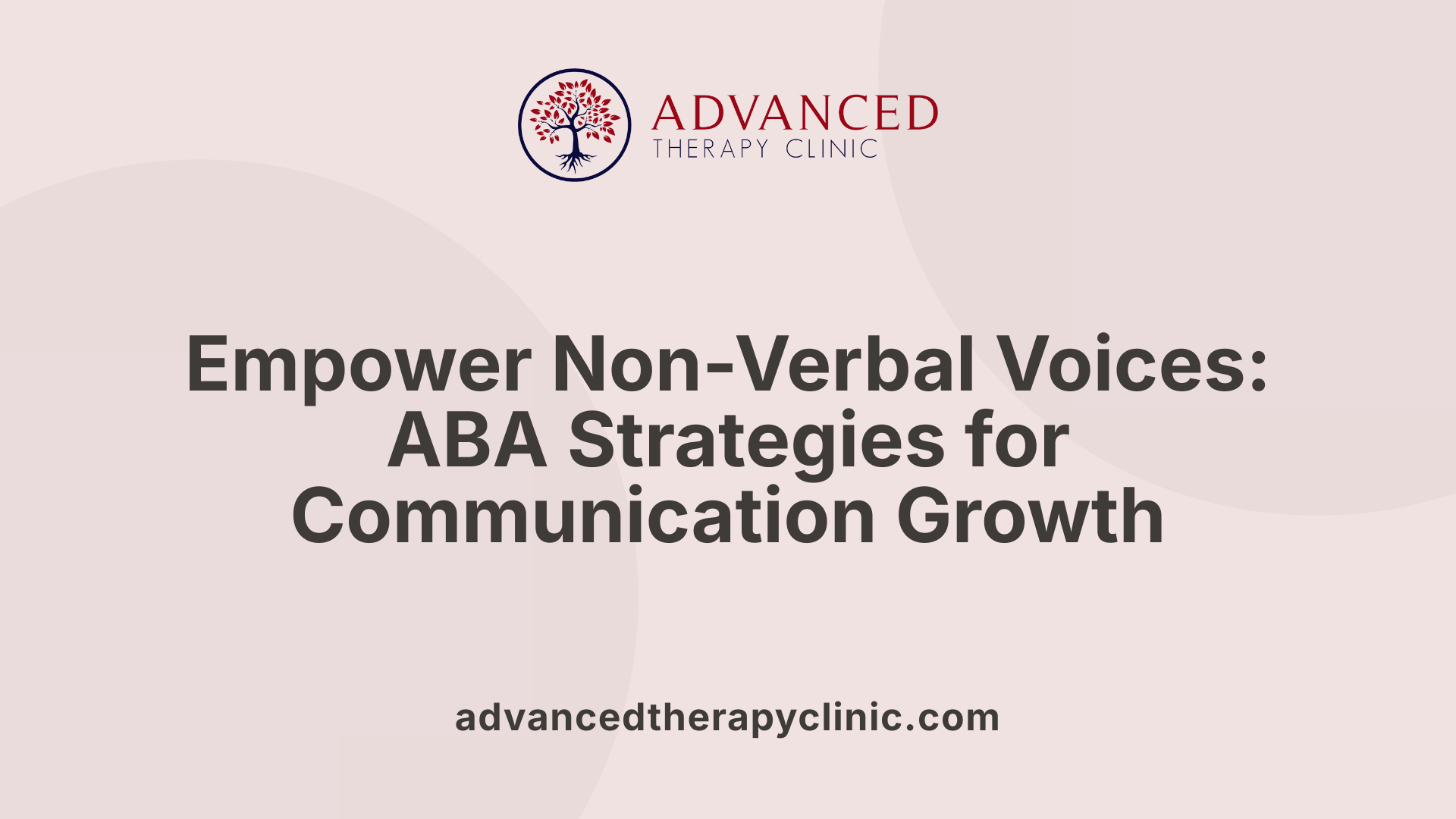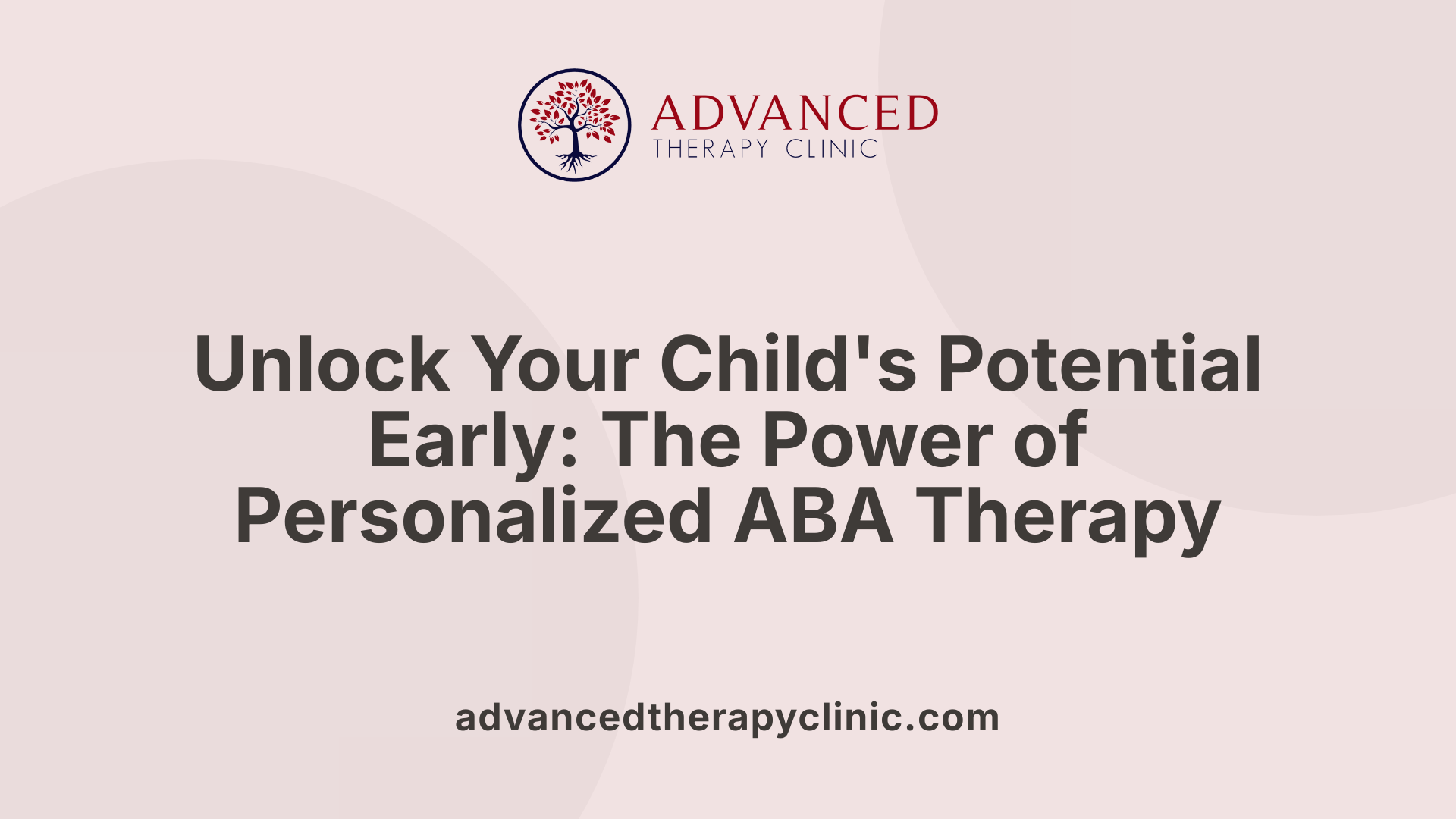The Benefits of ABA Therapy for Non-Verbal Children


Understanding ABA Therapy and Its Impact on Non-Verbal Children
Applied Behavior Analysis (ABA) therapy stands as a scientifically proven intervention recognized as the gold standard for supporting children with autism spectrum disorder (ASD), particularly those who are non-verbal or minimally verbal. Through a carefully structured approach grounded in learning theory and behavior analysis, ABA therapy focuses on teaching communication, social, and adaptive skills while reducing behaviors that can hinder development. This article explores how ABA therapy benefits non-verbal children by fostering speech development, improving social interactions, supporting families, and enhancing overall quality of life.
What Is ABA Therapy and Why Is It the Gold Standard for Autism Treatment?
What is ABA therapy?
ABA therapy, or Applied Behavior Analysis, is a scientific approach to understanding and improving human behavior through learning principles and motivation. It uses techniques like positive reinforcement and redirection to teach new skills and reduce challenging behaviors. ABA is especially effective for children with autism spectrum disorder (ASD), helping them develop communication, social, and adaptive skills.
Why is ABA considered the gold standard for autism treatment?
ABA therapy is widely recognized by authorities such as the US Surgeon General and the American Psychological Association as an evidence-based and effective method for treating autism. Its success stems from structured, individualized interventions that promote skill acquisition and behavioral improvements. ABA focuses on breaking down complex skills into small, manageable steps with repeated practice and reinforcement, which leads to meaningful and lasting changes.
Role of BCBAs and RBTs
Individualized ABA programs begin with thorough assessments conducted by Board Certified Behavior Analysts (BCBAs). These specialists design tailored intervention plans that Registered Behavior Technicians (RBTs) implement during therapy sessions. This team-based approach ensures that strategies address each child's unique needs and goals to maximize developmental progress.
Individualized assessment and intervention plans
Every ABA plan is personalized based on the child’s strengths and challenges. The individualized assessments guide the selection of targeted goals such as improving communication, social skills, and daily living abilities. The process emphasizes family involvement and consistency across settings like home and school, which enhances generalization and long-term benefits.
By combining science-backed techniques with personalized care and professional oversight, ABA therapy remains the leading treatment choice for improving life outcomes in children with autism.
How ABA Therapy Supports Communication Development in Non-Verbal Children

How does ABA therapy improve communication in non-verbal children?
ABA therapy uses a scientific, structured approach to help non-verbal children develop both verbal and non-verbal communication skills. One of the core methods is discrete trial training (DTT), which involves breaking down communication tasks into small, manageable steps and practicing them repeatedly with positive reinforcement. This encourages children to learn and use new communication behaviors effectively.
Functional communication training (FCT) is another powerful ABA technique. It helps children replace challenging or inappropriate behaviors with appropriate communication methods to express their needs and emotions. This reduces frustration and promotes more effective interactions.
ABA therapists often collaborate with speech-language pathologists to integrate speech goals with behavioral objectives. This partnership maximizes progress in articulation, vocabulary, and speech complexity, especially for children who are minimally verbal or non-verbal.
Social skills training is also incorporated within ABA frameworks. Techniques such as social stories and modeling appropriate social behaviors help enhance pragmatic language skills and encourage children to use communication in social settings. These personalized interventions tailor strategies specifically to each child's unique communication challenges, increasing their confidence and effectiveness in everyday interactions.
The Role of Early Intervention and Individualized Care in Maximizing ABA Therapy Outcomes

Why is early intervention with ABA therapy important?
Starting ABA therapy early, typically between 18 months and 5 years, leads to more substantial and lasting benefits in communication, social skills, and behavior. Early intervention significantly improves developmental and social outcomes, especially when begun before age six or soon after an autism diagnosis. This early start helps children develop crucial skills during their formative years, building a strong foundation for future learning and social interaction.
Tailoring interventions to each child's needs
ABA therapy is customized based on thorough assessments conducted by board-certified behavior analysts (BCBAs). This individualized approach ensures that interventions focus on the unique challenges and strengths of each child. By addressing specific communication difficulties and behavioral needs, ABA therapy guides skill acquisition in a highly effective manner.
Skill breakdown and repeated practice
The therapy process involves systematically breaking down complex skills into small, manageable steps. This allows children to learn gradually through repetition and reinforcement. Positive reinforcement encourages desirable behaviors by rewarding them, increasing the chance that these behaviors will continue. Such a methodical approach supports mastery of vital skills like communication, self-control, and social norms.
Long-term benefits and school readiness
Early and personalized ABA intervention not only boosts confidence and self-esteem but also prepares children for smooth transitions into school settings. Teaching listening skills, self-regulation, and social expectations enables children to engage more successfully with peers and educators. By fostering these capabilities, ABA therapy enhances school readiness and promotes independence, laying the groundwork for long-term success in academic and social environments.
How ABA Therapy Enhances Social Skills and Behavioral Confidence

Teaching Social Norms and Self-Control
ABA therapy focuses on teaching essential social norms and self-control skills that promote smoother interactions among children with autism. By breaking down social behaviors into manageable steps, practitioners help children understand how to listen, respond, and regulate their actions in various settings.
Use of Positive Reinforcement and Redirection
Positive reinforcement is a central technique in ABA therapy. Desired behaviors are encouraged through rewards, making it more likely that children will repeat those behaviors. Additionally, redirection helps gently guide children away from undesired actions towards more appropriate ones without using punishment.
Social Skills Training Methods
ABA therapy includes specific social skills training such as social stories and behavioral modeling. These methods teach children how to interpret social cues, initiate communication, and maintain conversations. Social stories provide scenarios that prepare children for real-life social interactions, while modeling demonstrates appropriate behaviors for them to imitate.
Impact on Confidence and Self-Esteem
By mastering social and behavioral expectations, children gain increased confidence and self-esteem. ABA helps them transition smoothly into school and community environments, reducing anxiety associated with social challenges. As their skills improve, they feel more capable and motivated to engage positively with others.
In what ways does ABA therapy improve social skills for non-verbal children?
For non-verbal children, ABA therapy enhances social skills by teaching communication alternatives through functional communication training. This approach replaces frustration-driven behaviors with effective methods to express needs and feelings. The use of positive reinforcement and targeted social skills training also supports these children in engaging socially, improving their overall interaction and self-confidence.
Supporting Families: The Importance of Caregiver Involvement in ABA Therapy

How does ABA therapy involve and benefit families of non-verbal children?
ABA therapy actively involves parents and family members by training them in reinforcement strategies. This approach empowers caregivers to effectively support their child’s learning and behavioral development throughout daily routines.
By participating in therapy, families gain the tools to consistently encourage positive behaviors and communication skills. This increased involvement helps children generalize what they learn during sessions to various settings, such as home, school, and the broader community.
As a result, children experience smoother transitions between environments and improved social integration. Caregiver participation also reinforces the consistency of interventions, which is critical for progress, especially for non-verbal children who benefit from strengthened communication skills.
In essence, ABA therapy not only focuses on the child but also enhances family dynamics by fostering supportive, effective collaboration among therapists, parents, and educators to maximize developmental outcomes.
The Broader Impact of ABA Therapy Beyond Communication

What additional benefits does ABA therapy offer beyond communication?
ABA therapy extends its impact far beyond just communication. One of its major benefits is the reduction of challenging behaviors such as aggression and frustration. By teaching children alternative communication methods and coping strategies, ABA helps them express their needs and feelings more effectively, which reduces the occurrence of disruptive behaviors.
In addition, ABA therapy enhances adaptive and daily living skills. This means children learn practical abilities like self-care, following routines, and managing simple chores, all of which increase their independence and prepare them for everyday life.
Moreover, ABA therapy plays a vital role in addressing and dispelling common stereotypes about autism. It highlights the significant learning potential and capacity for behavior modification in individuals with autism spectrum disorder, combating misconceptions about their abilities.
Finally, through these improvements, ABA therapy significantly boosts a child's overall quality of life. By fostering independence, self-confidence, and social skills, children become better equipped to navigate various environments, including home, school, and community settings, ensuring smoother transitions and greater participation.
These broad benefits make ABA therapy a comprehensive and effective approach to supporting individuals with autism and related developmental challenges.
The Transformative Power of ABA Therapy for Non-Verbal Children
ABA therapy offers a comprehensive, scientifically supported approach that empowers non-verbal children with autism to develop essential communication, social, and adaptive skills. Through early, individualized intervention and active family involvement, ABA therapy not only boosts speech development but also fosters confidence, reduces challenging behaviors, and supports smoother transitions into school and community settings. Recognized as the gold standard for autism treatment, ABA therapy shines a light on the immense learning potential within every child, breaking down barriers and opening pathways toward independence and enriched quality of life.
References
Recent articles

Expressive Speech Delay 2-Year-Old
Understanding and Addressing Expressive Speech Delay in Toddlers

How Speech Recognition Works
Unlocking the Power of Speech Recognition in Therapy and Healthcare

Autism and Head Size
Understanding the Complex Relationship Between Autism and Head Size

Occupational Therapy in Autism
Enhancing Independence and Quality of Life Through Occupational Therapy in Autism

Do Autistic People Understand Sarcasm?
Navigating the Nuances: Understanding Sarcasm and Social Communication in Autism

Autism Routines
Crafting Effective Daily Structures for Children with Autism


